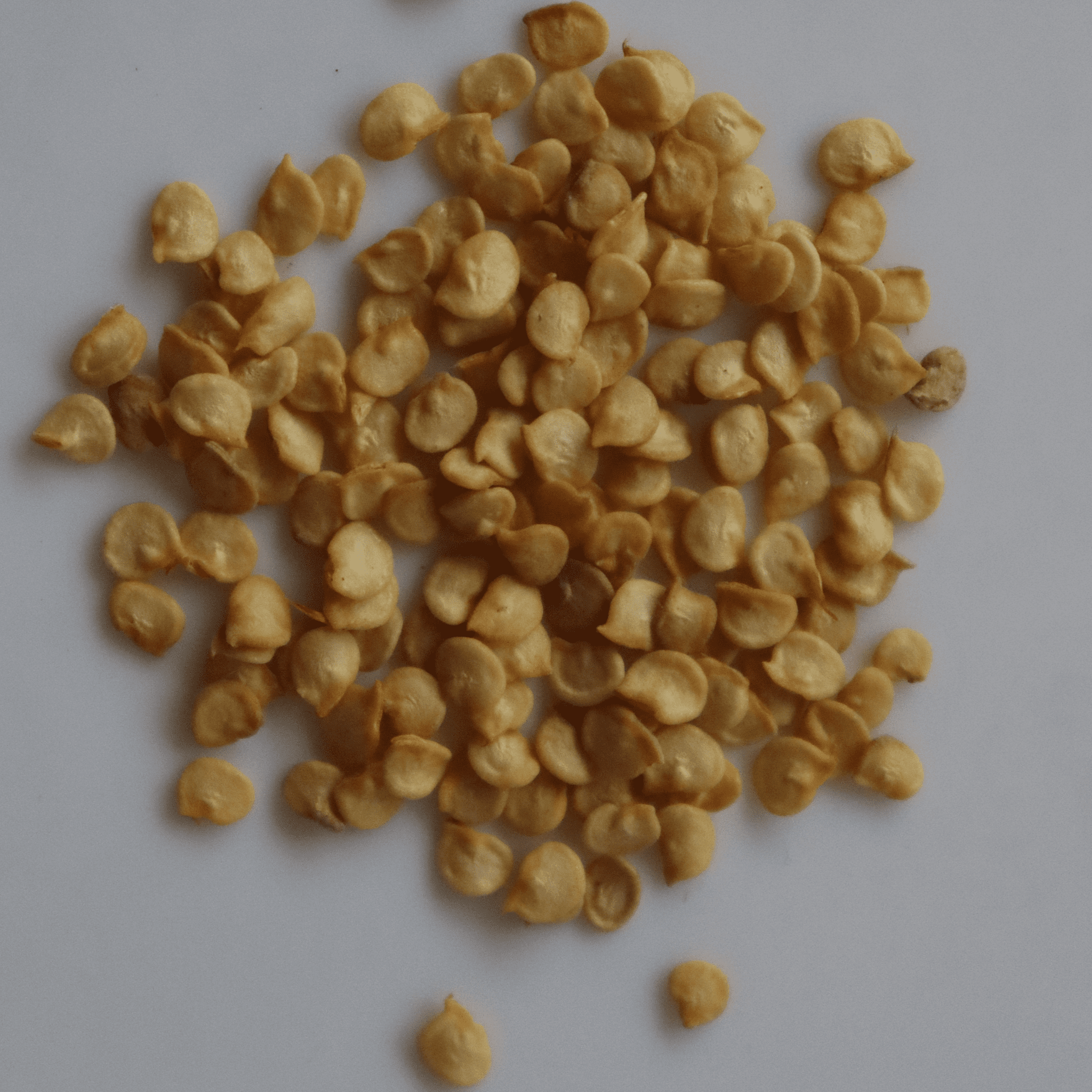

Product Description - Organic Green Chilli Seeds - Open Pollinated
Green chilli is a vital ingredient in Indian cuisine. Due to the fact that this spice is grown throughout the year, there is no scarcity, and a substantial amount is exported. Green chillies are a versatile ingredient that is typically used in savoury dishes such as vegetables, chutneys, salads, and a variety of other condiments. Green chillies are the ideal kitchen item for adding a hint of heat to meals.
Benefits/Uses of green chilli
- Few people are aware that these chillies are high in dietary fiber, which is Green chilli helps you maintain a healthy skin care regimen.
- Green chilli is a good source of vitamin C, which helps keep your skin healthy and shining.
- Consuming green chillies can aid digestion due to their high vitamin C content.
Specifications of green chilli seeds
|
Common Name |
Green chilli |
|
Sunlight |
Full sun |
|
Water |
Watered daily |
|
Temperature |
70 degrees Fahrenheit in the daytime and above 60 degrees at night. |
|
Soil |
Loose and well-drained, it should be rich in nutrients and have a pH of between 6.2 and 7.0. |
|
Fertilizer |
Apply fertilizers and manure thrice a year |
|
Germination |
6 to 8 days |
|
Harvest Season |
50 to 60 days |
|
No. of seeds |
50+ |
Planting and care for green chilli
Sowing green chilli seeds
- Dip the seed in A2 Desi Cow Panchagavya Organic Growth Promoter solution for 15 minutes
- Spread the seeds out on a plastic sheet to dry. The seeds can then be planted after they have been dried
- Plant treated seeds to around 1⁄2 to 1 inch deep into a grow bag filled with seed to plant Potting Mix and sprinkle water with caution.
Growing green chilli
- It takes about 14 days for green chilli seeds to germinate.
- Plant the seedlings 40 days after they germinate.
- Keep in mind that even a light frost can cause significant harm. Soil temperatures should be at least 70 degrees Fahrenheit during the day and higher than 60 degrees Fahrenheit at night.
- By enriching the soil with Fish Amino Acid 100% Organic Concentrated - Growth Promoter, increase the potential for plant growth and then transplant the seedlings.
- Although green chillies like hot weather, excessive heat can cause them to lose their blossoms.
Harvesting green chilli
- Green chilli mature in around 70 days after transplanting, but the hot variety needs a longer growing season.
- Frequently choose chilli varieties because they allow the plant to continue production.
- Do not use your hands or a fork or a vegetable peeler to remove the stems from the peppers; use a knife or scissors.
- If you try to remove the whole pepper plant without first pruning, you'll hurt the tree.
Precautions while growing green chilli
- Spray A2 Desi Cow Panchagavya Organic Growth Promoter in 3 months once in three months
- Pest removal: Aphids, cutworms, flea beetles, thrips, and whiteflies are all pests that target the green chilli plant.
- Take disease precautionary measures. Fungus thrives on damp leaves. Use Pseudomonas Fluorescens Bio Fertilizer or Trichoderma Viride Bio Fertilizer for a better solution.
- Make sure the soil remains moist.
- As you weed each section of the bed, keep the soil uniformly moist to prevent thatch and disease buildup.
- Mulch is essential to help with water conservation and to keep weed growth to a minimum.
Common Problems affecting green chilli plants and solutions
- A wilted plant usually indicates that it is stressed.
- Cultural influences, animal, pest, or pathogen damage may be the most likely reasons for plant and flower death.
- Yellowing and dropping of leaves are caused by erticillium wilt (Verticillium dahliae).
- As wilting signs of progress, the leaf edges can also roll inward. Root phytophthora (Phytophthora capsici) can exhibit similar eclipsing symptoms, causing the plants to wilt and die quickly, and it also affects the roots, causing water-swept, dark brown lesions to grow the taproots and smaller side-roots.
- Phytophthora root rot develops anywhere from germination to maturity. Phytophthora root rot can also become a problem if water isn't available. If proper water control is employed, however, the problem can be prevented.
- Biofertilizers like Organic Neem Cake, Pseudomonas Fluorescens Bio Fertilizer, Trichoderma Viride Bio Fertilizer can provide preventative protection for phytophthora root rot, although there is no effective chemical control for plants already infected with these diseases.
- Damp leaves are particularly vulnerable to fungal infection. Instead of using overhead watering, you can water plants at the base or on a drip irrigation system to help ensure the disease does not invade.
No. of Green Chilli Seeds - 50+











